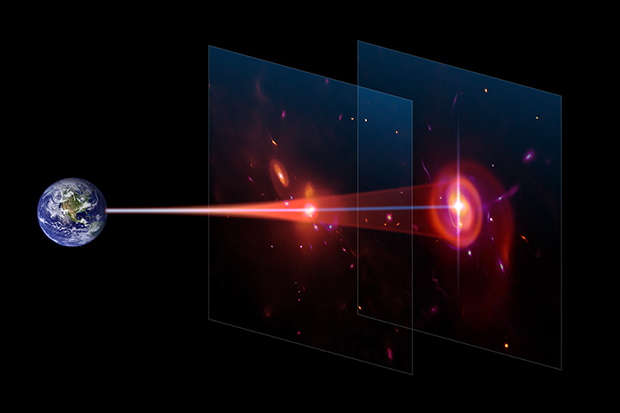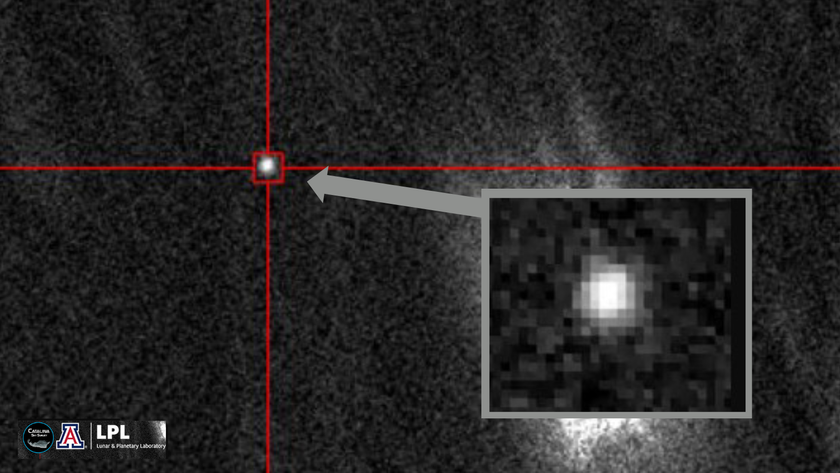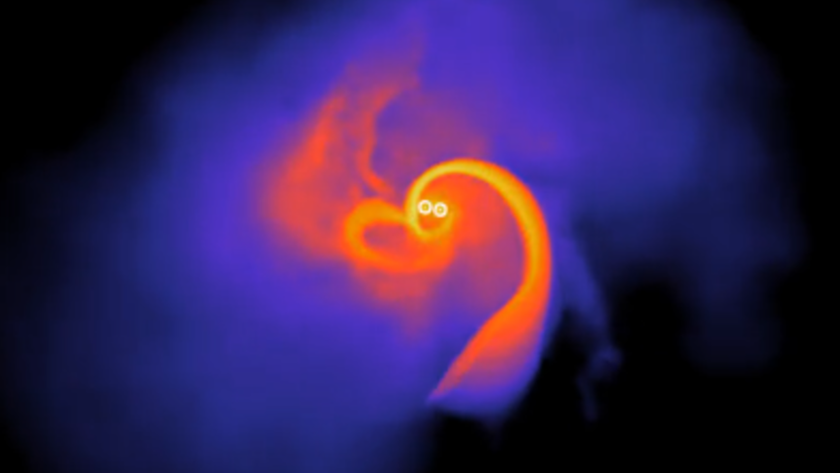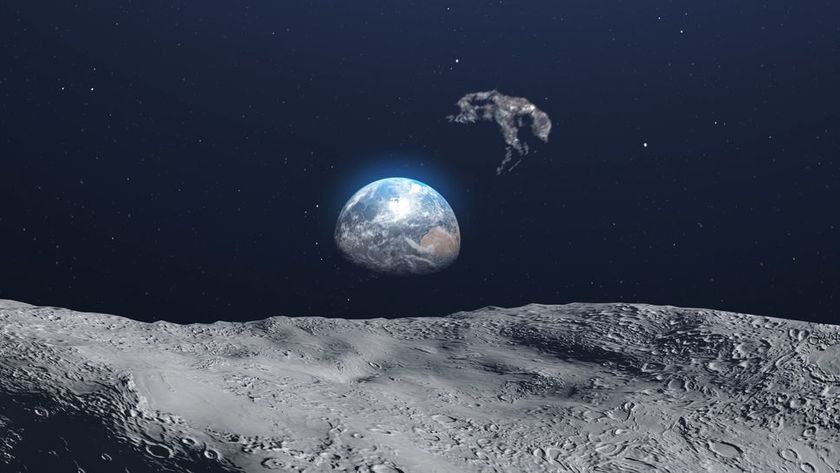Light from Ancient Galaxies Illuminates 40-Year Mystery of Early Universe

Early galaxies are shining light on a decades-old mystery, helping to determine the size and composition of the gas clouds responsible for forming their neighbors.
A new technique uses the light from some of the first galaxies to illuminate gas clouds from the early universe.
"These gas clouds — their size has been elusive for decades, even though they tell us an enormous amount about galaxy evolution," Jeff Cooke, an astrophysicist at Swinburne University in Australia, said at a news conference at the 227th meeting of the American Astronomical Society, held in Kissimmee, Florida, earlier this month. Cooke worked with John O'Meara, an astrophysicist at Saint Michael's College in Vermont, to pioneer a new technique to illuminate the clouds of gas that built galaxies like the Milky Way. [Watch 13.7 Billion Years of Galactic Evolution in Less Than a Minute (Video)]
"Now, you have a comprehensive sample," Cooke said. "You can study all galaxies and learn how they formed from the beginning until now."
A new era
After the Big Bang, clouds of gas and dust permeated the universe. As these clouds coalesced, they formed clusters that created stars and, ultimately, galaxies. Because light takes time to travel through space, as astronomers stare over great distances, they are able to see objects as they appeared early in the life of the universe. That means they can observe early gas and dust clouds, known as damped Lyman alpha systems (DLAs), as they appeared 11 billion years ago, only a few billion years after the Big Bang (which occurred about 13.8 billion years ago). These clouds are thought to be precursors to early galaxies.
Cooke and his team used the Keck Observatory in Hawaii and data from the European Southern Observatory's Very Large Telescope in Chile to measure the size and characteristics of 10 DLAs with a new technique that should help to characterize the clouds of early gas. They looked through the material to large galaxies behind it, which provide significant light, to understand both the sizes and the chemistry of the ancient clouds.
Previously, scientists used light from quasars, some of the brightest objects in the universe, to understand the chemistry of the early galactic seeds. If light from a quasar streamed through a DLA before it reached Earth, the elements within the cloud would absorb some of it, providing insight into its composition.
Get the Space.com Newsletter
Breaking space news, the latest updates on rocket launches, skywatching events and more!
But quasars are small, and provide only a peek through a tiny portion of one of these enormous clouds, which can stretch over 33 to 330 square light-years, according to Cooke — essentially the size of smaller galaxies from the early universe.
If a galaxy were roughly the size of a college campus, using a quasar to investigate part of it would be like using a laser pointer to light up a region. Using a background galaxy's light provides as much as a 100-million-fold increase in the area probed, Cooke said.
"That's immense," Cooke said. "It's a new era in studying these objects."
The larger light source not only allows a more in-depth probe of the enormous clouds; it also can help astronomers understand just how large a cloud is. Furthermore, galaxies are far more common than quasars. If a DLA is larger than the light from the background galaxy, astronomers also can use other galaxies to probe the cloud.
The astronomers successfully used small telescopes to study their sample, but Cooke called the newfound technique "timely" due to the rise in larger telescopes, which could make the method even more effective. Instruments such as the Thirty Meter Telescope in Hawaii, slated to go online within the next decade, could help to map the clouds of gas that evolve into galaxies like our own.
"It's now the era of the new 30-meter [98 feet] telescopes that will be online in just a few years," Cooke said. "With these telescopes, you can do this routinely. You can look at hundreds of thousands of these things, and study these galaxies in great numbers."
The prolific population of early galaxies should allow astronomers to make a three-dimensional map of how gas is distributed across the universe and how the galaxies evolved.
"It's a very powerful technique, and one that we're quite excited about," Cooke said.
The research was detailed in The Astrophysical Journal Letters in October.
Follow Nola Taylor Redd on Twitter @NolaTRedd or Google+. Follow us @Spacedotcom, Facebook or Google+. Originally published on Space.com.
Join our Space Forums to keep talking space on the latest missions, night sky and more! And if you have a news tip, correction or comment, let us know at: community@space.com.

Nola Taylor Tillman is a contributing writer for Space.com. She loves all things space and astronomy-related, and enjoys the opportunity to learn more. She has a Bachelor’s degree in English and Astrophysics from Agnes Scott college and served as an intern at Sky & Telescope magazine. In her free time, she homeschools her four children. Follow her on Twitter at @NolaTRedd


